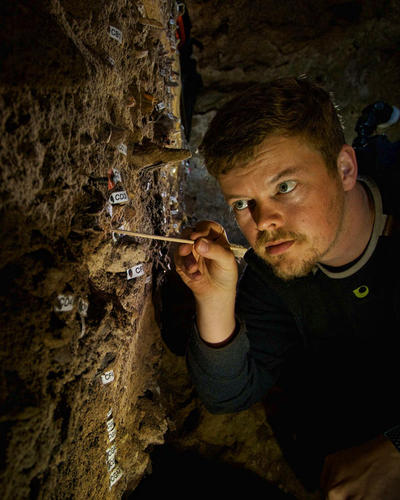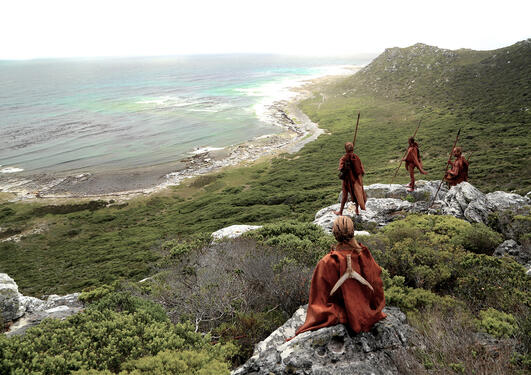Micromorphology and 3D reconstruction
Archaeological sites are places where the physical remains of past human activities can be found. It is the job of archaeologists to painstakingly excavate and document such remains in high detail. We then use all the information available to put the puzzle back together.

Main content
Fragmentary evidence
Archaeological sites are places where the physical remains of past human activities can be found. It is the job of archaeologists to painstakingly excavate and document such remains in high detail. We then use all the information available to put the puzzle back together to gain a picture of how people in the past lived and developed through time.
When we think about the materials that people in the past left behind, we often think about the artifacts that we directly excavate and can hold in our hands, like stone tools, butchered bones, or beads and ochre. However, the prehistoric inhabitants left behind much more that we can only clearly see and study under magnification. For example, when past humans lit and used fire, they left behind microscopic particles of ash and charcoal that stain the sediments a dark color, but which can only be clearly identified under the microscope. By studying these microscopic remains, we are able to look at a whole range of past human activities that are largely invisible during excavation of the archaeological record.
Micromorphology
How can we identify and study these microscopic remains of past human behaviours? This is not always a straightforward task. Often, we need to study the smallest components of the archaeological record before reaching a robust conclusion; that is the sand, dirt and sediments, and all the microscopic fragments within them. In the SapienCE project, we achieve this level of analysis through archaeological micromorphology. This method involves the collection of intact blocks of sediments in the field and results in the making of petrographic thin sections at specialized laboratories. The thin sections, which essentially are glass slides (6 x 9 cm) on which intact archaeological sediments have been glued, allow us to evaluate the nature of the ancient occupation debris in minute detail through powerful microscopes.
3D reconstruction
As part of our current documentation strategy, we record the site and the excavation in 3D using a total station and photogrammetry, creating a detailed virtual record of the sites. Additionally, drawings and thousands of photos are available from past and current excavations. We use photogrammetry and field records to incorporate information from previous excavation seasons. Using this method, we can sit by the computer, reconstruct and review the work that has been completed and perform analyses of each individual layer at the site. This aids in the analyses of the material and the planning of future fieldwork. The data we produce using this method adds to the understanding of prehistoric life in the caves.


